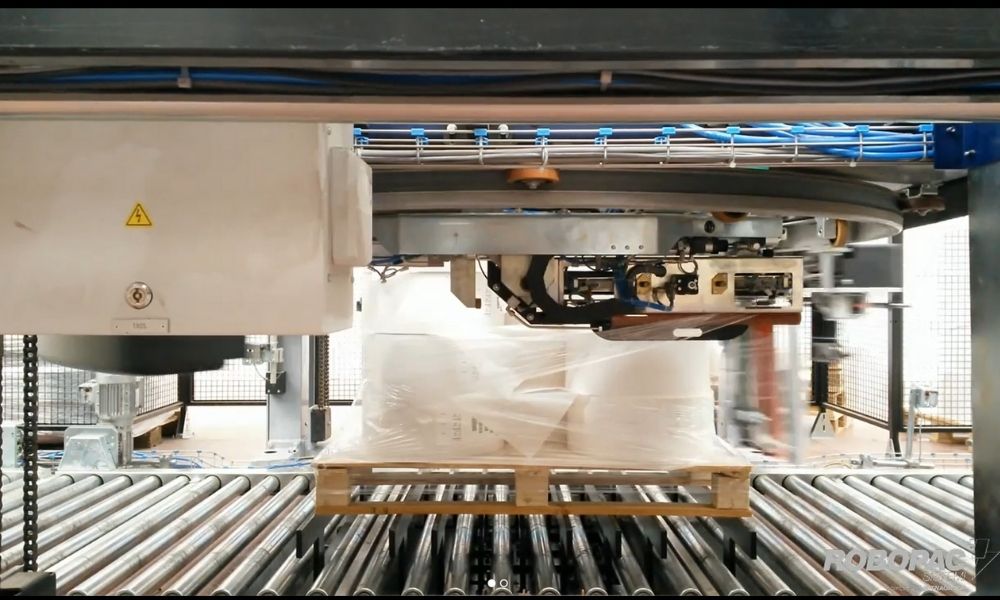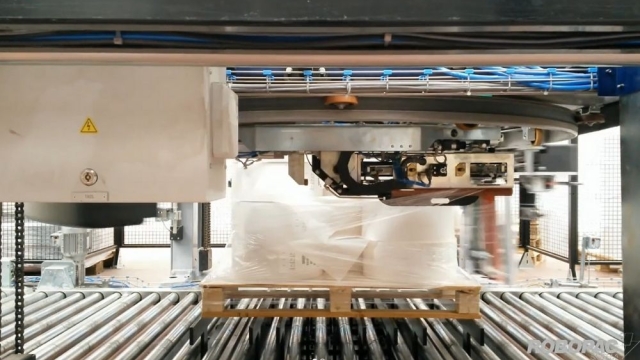Stretch wrappers, also known as pallet wrappers or stretch wrap machines, play a vital role in the logistics industry by securely packaging goods onto pallets for transportation and storage. These innovative machines utilize stretch film to tightly bind the items, ensuring stability and protection during transit. Understanding the intricacies of stretch wrappers is essential for businesses seeking efficient and reliable packing solutions. In this comprehensive guide, we will unravel the secrets behind these indispensable machines, exploring their various types, advantages, and key features. So, whether you are a logistics expert or a curious individual looking to enhance your knowledge, join us on this journey of demystifying stretch wrappers and unlocking their potential in the world of pallet wrapping.
Understanding Stretch Wrappers
Stretch wrappers, also known as pallet wrapping machines or pallet wrappers, are an essential tool in the shipping and logistics industry. These machines play a crucial role in securing and protecting goods during transportation. With the ability to tightly wrap stretch film around pallets, stretch wrappers ensure stability, prevent damage, and optimize storage space.
A stretch wrapper operates by automatically wrapping stretch film, a highly elastic plastic material, around a pallet of goods. This process is designed to create a strong and durable bond between the goods and the pallet. By securely holding the items together, stretch wrappers minimize the risk of shifting or toppling during transit.
With various models and configurations available, stretch wrappers offer flexibility to cater to different packaging needs. Some machines are semi-automatic, requiring an operator to manually attach the stretch film to the pallet before the wrapping process begins. On the other hand, fully automatic stretch wrappers complete the entire process autonomously, from attaching the film to cutting and sealing it securely.
Stretch wrap machines utilize advanced technology to ensure optimal performance and efficiency. They often come equipped with features like adjustable tension settings, variable wrap patterns, and programmable controls. These functionalities allow operators to customize the wrapping process according to specific requirements, such as the type and size of the load.
In summary, stretch wrappers are indispensable devices that simplify and enhance the packaging and shipping process. They provide a reliable and cost-effective solution for securing goods on pallets, promoting safe transportation, and ultimately reducing the risk of product damage. Whether it’s a small warehouse or a large distribution center, stretch wrappers offer a practical and efficient way to streamline operations and protect valuable shipments.
Different Types of Stretch Wrappers
In the world of pallet wrapping machines, there are several different types of stretch wrappers available. Each type offers unique features and advantages depending on the specific needs of a business. From semi-automatic to fully automatic options, here are three commonly used types of stretch wrappers:

Pallet Wrapper: This type of stretch wrapper is designed specifically for wrapping pallets. It efficiently secures the loads to pallets using stretch film, protecting the merchandise during storage or transportation. Pallet wrappers often come with advanced features such as adjustable film tension, pre-stretch capabilities, and different wrapping patterns to cater to various pallet sizes and shapes.
-
Stretch Wrap Machine: Stretch wrap machines are versatile and can be used to wrap various types of products, not just pallets. They are commonly used in industries like food and beverage, pharmaceuticals, and manufacturing. These machines come in different sizes and configurations, ranging from tabletop models for small-scale operations to high-speed automated systems for large-scale production lines.
-
Stretch Wapper (Typo: Should be "Wrapper"): A stretch wapper, or stretch wrapper, as it is correctly called, is a popular choice for businesses seeking convenience and efficiency. It automates the wrapping process and is capable of handling high volumes of products. Stretch wappers usually come equipped with features such as weight sensors, programmable settings, and automated film feed systems. They are particularly beneficial for companies dealing with large quantities of products that require consistent and precise wrapping.
By understanding the different types of stretch wrappers available, businesses can make informed decisions about which type best suits their needs, ultimately optimizing their packaging processes and protecting their products during transit or storage.
Benefits of Using Stretch Wrappers
Stretch wrappers, also known as pallet wrappers or stretch wrap machines, offer numerous benefits for businesses that handle large volumes of palletized goods. In this section, we will explore some of the key advantages of using stretch wrappers in the packaging and transportation process.
Increased Stability: One significant benefit of utilizing stretch wrappers is the improved stability they provide to palletized loads. By securely wrapping the goods with stretch film, the pallets become tightly bound together, reducing the risk of shifting or toppling during handling and transportation. This enhances overall product integrity and minimizes the potential for damage or loss.
Time and Labor Efficiency: Employing stretch wrappers can significantly enhance operational efficiency by saving time and reducing labor efforts. These machines automate the wrapping process, eliminating the need for manual application of stretch film. This not only speeds up the packaging process but also allows employees to focus on other essential tasks, improving overall productivity.
Cost Savings: Stretch wrappers contribute to cost savings in several ways. Firstly, they reduce the usage of stretch film, as the machines apply consistent tension and eliminate wastage often associated with manual wrapping. Additionally, the increased stability provided by stretch wrappers minimizes the occurrence of product damage, thus reducing potential financial losses. Moreover, the time and labor efficiency gained through automation have cost-saving implications, as they enable businesses to optimize their workforce and allocate resources more effectively.
In conclusion, stretch wrappers offer a range of benefits including increased stability, time and labor efficiency, and cost savings. By utilizing these pallet wrapping machines, businesses can improve the safety and reliability of their packaging process while gaining significant operational advantages.



